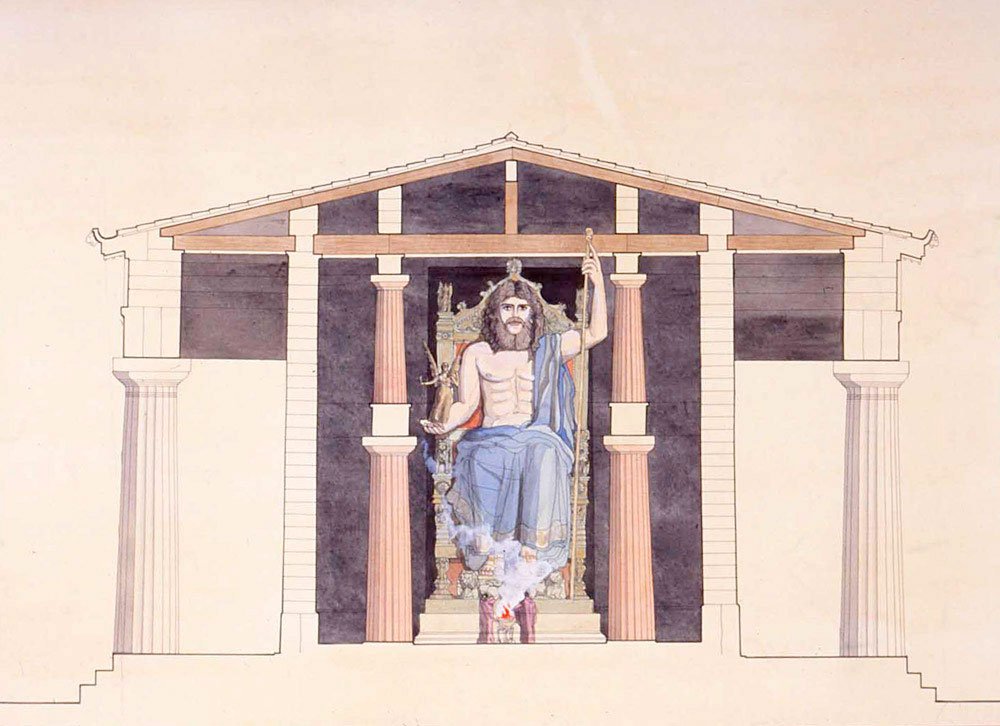The Temple of Zeus at Olympia was constructed during the 5C BC, which was a time of great prosperity for the sanctuary. Other buildings were added during this period, but the Temple of Zeus took pride of place.
This remarkable structure suffered at the hands of Christian zealots in the 5C AD and serious earthquakes in subsequent years. Even though all you can see today is the base of the temple and fallen columns, it is still an impressive sight.

The best in the Peloponnese
Over the centuries the Temple of Zeus became greatly admired both for it’s size – it was the largest temple in the Peloponnese – and for it’s grace and beauty. The statue of Zeus which was added was one of the most admired in the ancient world.
The Temple of Zeus at Olympia was designed by the architect Libon from Elis. It was constructed between 470BC and 460BC. It was built of local shell limestone covered by imitation marble stucco, also made of lime.
The temple stood on a crepidoma. The front of the base of the temple on the east was breached by an access ramp. The gabled roof was covered by marble tiles, and gargoyles on the roof in the shape of lion heads were also made of marble. Initially the marble came from the island of Paros, but because repairs had to be frequently made because of the numerous earthquakes they used marble from mount Pentelicus near Athens
Pediment carvings
The marble statues of the east pediment show the preparations for the chariot race between the Olympic heroes Oinomaos and Pelops. The statues on the western pediment are of the fight between the Laphthae and Centaurs which erupted during the marriage of Pirithous and Deidameia.
The metopes above the entrances showed the twelve labours of Heracles. These have been partially restored, and are excellent examples of the sort of Greek art which occurred after the Persian Wars.

The statue of Zeus
Remarkable though the Temple of Zeus at Olympia was, one of the main reasons for it’s fame in classical times and succeeding centuries was the famous colossal chryselephantine statue of Zeus. This was finished and placed in the temple in about 435BC.
The statue was the work of Pheidias, who was also responsible for the statue of Athena at Athens, and also had overall control over the work of the construction of the Parthenon. He made the statue in a special workshop at Olympia which had the same dimensions as the cella of the temple where the statue would finally reside. Many tools and other objects have been found in the vicinity of the workshop. A beaker was discovered and the inscription on it read “I belong to Pheidias”.
Sadly, nothing of the statue remains today. But we know from the comments recorded by those who visited the Temple of Zeus at Olympia that there was unanimous admiration for it. It was known as one of the Seven Wonders of the Ancient World.


An ancient writer called Arrian said, “The other Wonders of the World we only admire; this one we reverence as well”.
The statue was so large that even though Zeus was seated, his head almost touched the roof of the naos (or cella). He held a symbol of victory of gold and ivory in this right hand, and a sceptre in his left. The throne was decorated with mythical scenes which were inlaid with gold, ivory and precious stones.